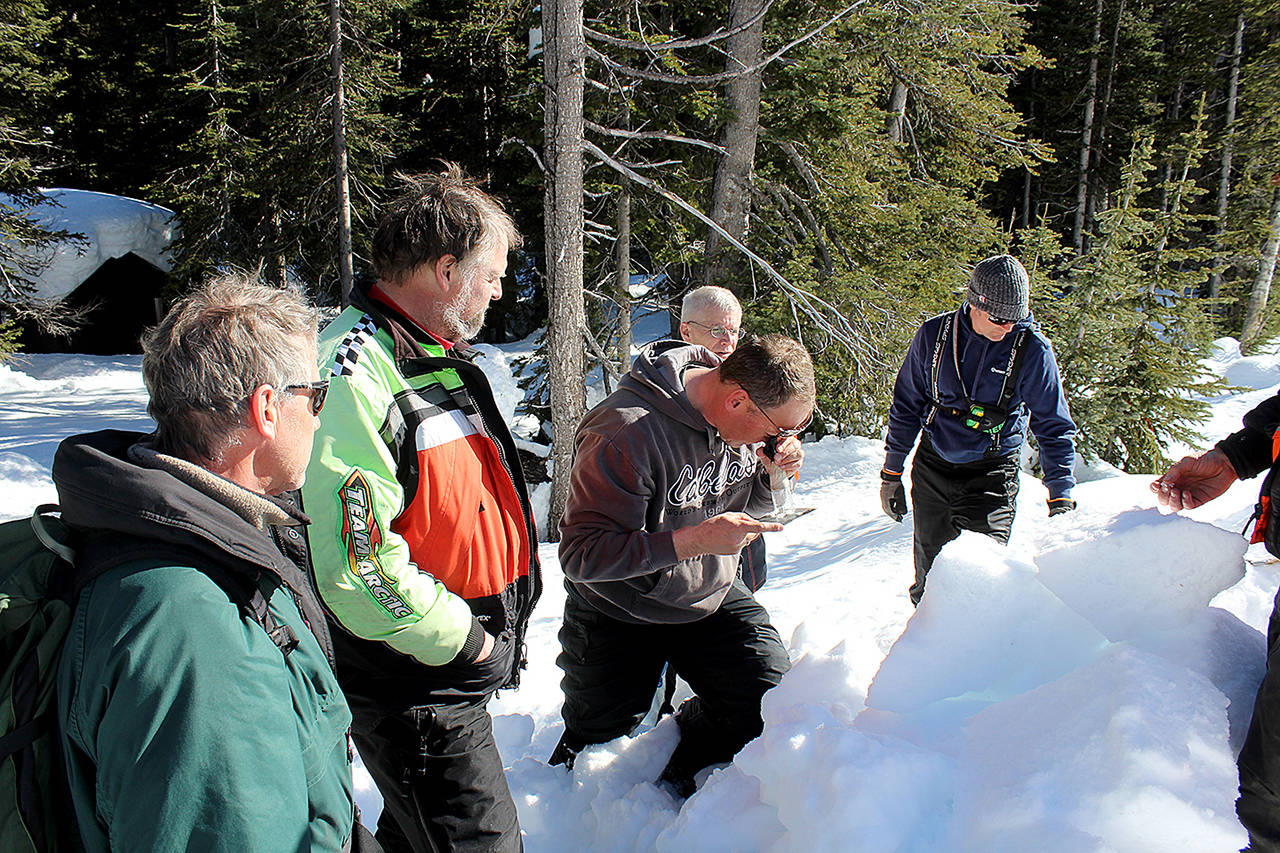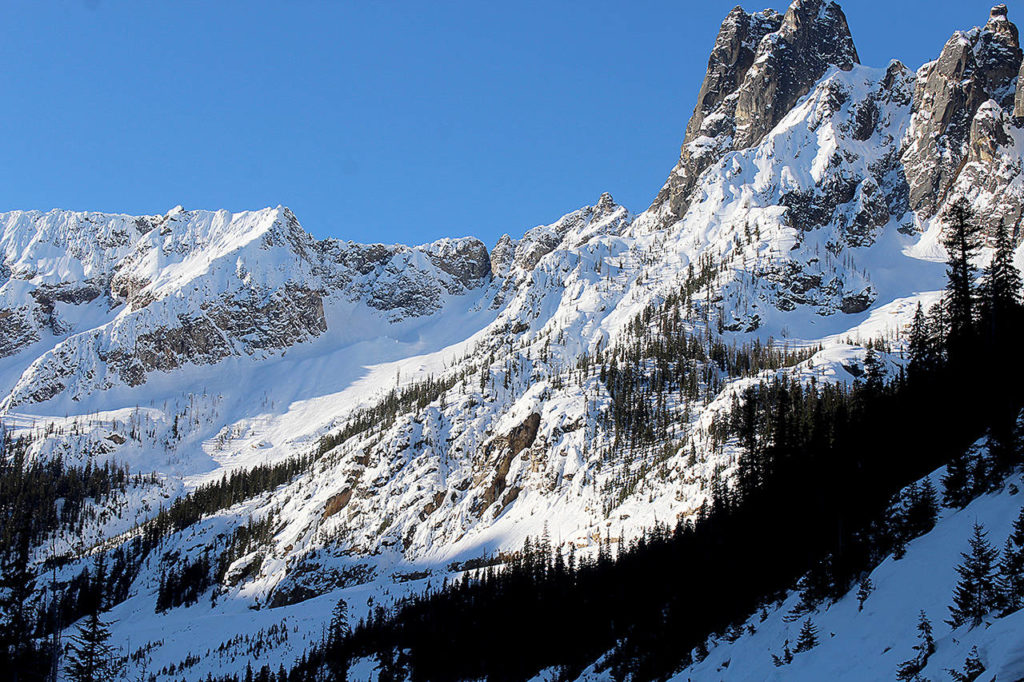INDEX — Glaciers in the North Cascades could shrink for the seventh year in a row.
That’s because snowpack, which acts as a shield against hot summer days, has been lower than normal this winter, according to recent measurements taken at six sites in the region.
The pattern continued despite an extra-chilly February that brought historic amounts of snow to the lowlands.
Snowpack is currently 28 percent below normal, the fifth-lowest measurement since record keeping began in 1984 and the lowest since 2015. And there’s little time left for more snow to make up the deficit.
“It’s substantially below typical,” said Mauri Pelto, an environmental science professor with Nichols College in Massachusetts. He’s monitored the area going on 36 years and wrote his analysis of this winter in his blog, “From A Glacier’s Perspective.”
Snowpack is important for the state’s water supply and for hydroelectricity generation during hot, dry months. It’s stored rainfall.
February’s snowfall may have led people into a false sense of security, Pelto said. The month brought the Seattle area the most recorded snow in one month, the National Weather Service reported at the time. So it’s hard not to think that means big gains up high, Pelto said. “You think the mountains are getting buried with winter,” he said, when in fact that wasn’t the reality.
It was a strange winter overall, he said. On average in January, you would have to climb up above 5,000 feet in elevation to feel freezing temperatures. February saw average freezing temperatures at record-breaking low elevations, down to about 1,200 feet. Then, things warmed up dramatically in March. So much so that the National Weather Service that month reported the hottest winter days measured in the region.
If glaciers are going to make it through the year without shrinking more, summer temperatures will have to be much cooler than normal, Pelto said.
“The odds of that aren’t real good,” he said. “Even a little bit cool would not be enough.”
Pelto, who makes annual treks to Washington to monitor climate changes, has seen firsthand how glaciers have shrunk.
The formations feeding into the Skykomish River Basin are disappearing in slow motion. Take for example Columbia Glacier, nestled above Blanca Lake in the Monte Cristo region. It’s thinning faster than it’s retreating, Pelto said, losing 17 meters in thickness since 1984. It’s lost 22 percent of its mass during that time.
“Columbia Glacier is just deflating,” Pelto said. “It’s overall volume is dissipating so quickly. If you can’t have a persistent snowpack, you can’t survive as a glacier.”
The loss could translate into challenges downstream. Summer stream flows aren’t what they once were, Pelto said, having decreased 26 percent. Sensitive aquatic species, like salmon, will struggle.
Decades from now, Columbia will cease to exist altogether, and Blanca Lake’s bright-green water, the result of glacial runoff, will turn azure, according to scientific projections.
“There’s no hope of saving it,” Pelto said. “Even if we don’t get any future warming, it can’t survive this climate.”
Zachariah Bryan: 425-339-3431; zbryan@heraldnet.com. Twitter: @zachariahtb.
Talk to us
> Give us your news tips.
> Send us a letter to the editor.
> More Herald contact information.


























